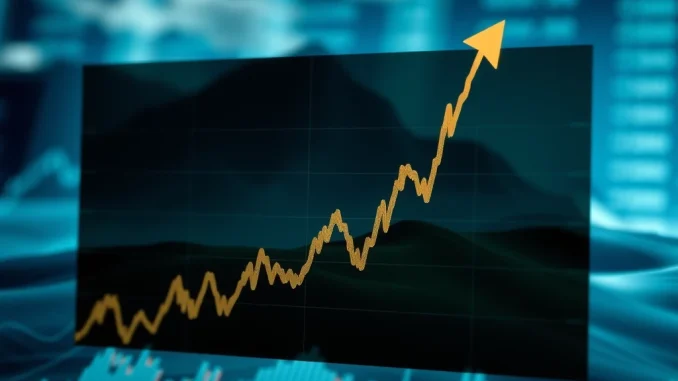
Are you keeping an eye on the **US Treasury yield**? Recent activity in the **bond market** has sent ripples across the financial landscape, triggering a significant **market sell-off**. For investors, particularly those in volatile sectors like cryptocurrency, understanding these macroeconomic shifts is crucial.
The Sharp Jump in **US Treasury Yields**
The financial markets recently reacted strongly to a notable surge in the **US Treasury yield**. Specifically, the yield on the 20-year U.S. Treasury bond climbed sharply, reaching 5.108%. This marked its highest point since November 2023. The 10-year Treasury yield also saw an increase, moving up to 4.607%. These movements are important indicators of borrowing costs and investor sentiment regarding government debt.
Understanding the **Bond Market**: Why Weak Demand Matters
What caused this sudden spike in **US Treasury yield**? According to reports, a key factor was weak demand observed at a recent government bond auction. When the government issues new debt (bonds), investors bid on it. If there isn’t strong interest or demand from buyers, the government must offer higher yields to make the bonds attractive. This higher yield set during the auction then influences yields on existing bonds in the secondary **bond market**, pushing them upwards. Weak auction results signal less appetite for government debt at current rates, forcing yields higher.
The Chain Reaction: From **Rising Yields** to a **Market Sell-Off**
The increase in the **US Treasury yield** isn’t just a technical detail for bond traders; it has broader implications that can lead to a widespread **market sell-off**. Here’s why:
- **Higher Borrowing Costs:** Treasury yields serve as a benchmark for many other interest rates, including mortgages, corporate bonds, and other loans. When these yields rise, it directly increases **borrowing costs** for businesses and consumers.
- **Impact on Asset Valuations:** Higher **borrowing costs** can reduce corporate profits (as debt becomes more expensive) and make future earnings less valuable when discounted back to the present at a higher rate. This often leads to a decrease in stock valuations.
- **Increased Attractiveness of Bonds:** As bond yields rise, fixed-income investments become more attractive relative to riskier assets like stocks or even cryptocurrencies. Investors may shift capital out of these riskier markets into the perceived safety of government bonds offering a better return.
- **Inflation and Debt Concerns:** The spike in yields reignites concerns about persistent inflation, which erodes the value of fixed returns from bonds, requiring higher yields to compensate. It also highlights concerns about the growing U.S. national debt and the government’s ability to finance it without pushing **borrowing costs** higher.
This combination of factors creates downward pressure across various markets, resulting in the observed **market sell-off** as investors react to the changing economic landscape and anticipate potential headwinds.
Impact on Investors: Navigating **Rising Yields** and **Borrowing Costs**
For investors, especially those exposed to growth stocks or digital assets, the environment of **rising yields** and increasing **borrowing costs** requires careful consideration. Higher interest rates can impact the valuation models used for many tech and crypto projects. While the cryptocurrency market has its unique drivers, it is not immune to macro-economic forces. Periods of rising rates and economic uncertainty can sometimes lead to reduced risk appetite among investors, potentially affecting capital flows into digital assets.
Monitoring key economic indicators like the **US Treasury yield** and understanding the dynamics of the **bond market** provides valuable context for navigating broader market movements. The recent **market sell-off** serves as a reminder of how interconnected global financial systems are and how quickly sentiment can shift based on changes in fundamental economic factors like **borrowing costs**.
Summary
The recent surge in the **US Treasury yield**, driven by weak demand in the **bond market**, has significant implications. This rise translates directly into higher **borrowing costs** and has contributed to a notable **market sell-off**. As concerns about inflation and U.S. debt persist, investors should remain vigilant, understanding that movements in traditional markets, influenced by factors like **rising yields**, can impact the broader investment environment, including the crypto space.



